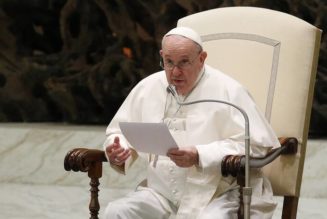By Phil Lawler ( bio – articles – email ) | Aug 21, 2020
This morning I had planned to write about the disgraceful excuse for an “apology” proffered by a former bishop. But I see that Christopher Altieri, writing in the Catholic Herald has beaten me to the punch:
Let’s be clear about two things: Bishop Michael J. Bransfield—improbably emeritus of the Diocese of Wheeling Charleston—did not apologize; nor did he get the “justice with a gesture of mercy” that his successor, Bishop Mark E. Brennan, suggested he might have got.
Bishop Bransfield, you will recall, was allowed to resign upon reaching the normal age limit, despite mounting evidence that he had used diocesan funds on personal expenses at a spectacular level and—as if that weren’t enough—established a pattern of sexual harassment of priests and seminarians under his authority. Bishop Brennan, his successor in the West Virginia diocese, had denounced Bransfield’s behavior and suggested appropriate disciplinary action. After months of delay the Vatican finally approved the disciplinary action—but, Altieri rightly observes, not before watering down Bishop Brennan’s suggestions.
(Did I mention that Bransfield is a protégé of the disgraced former cardinal, Theodore McCarrick? And did I mention that we are still waiting for the Vatican’s promised report on how McCarrick rose to power and influence? Is it unreasonable to speculate that the same people and powers that supported McCarrick’s rise through the hierarchy are still at work, softening the penalty on Bransfield?)
Bishop Bransfield’s “apology” is of the sort that could have been delivered with a one-finger gesture. (You know the genre: “I’m sorry if you’re so hypersensitive you were offended by what I said.”) Having been required to pay back a portion of what he took from the diocesan coffers, Bransfield pouts: “I have now done so even though I believed that such reimbursements to me were proper.” As for charges of sexual harassment—which a Vatican investigation found convincing—the disgraced bishop concedes only that “if anything that I said or did caused others to feel that way, then I am profoundly sorry.” Can you detect any hint of remorse in Bishop Bransfield’s letter? I can’t.
Yes, the former bishop (who, for some reason, has been allowed to retain the title of “bishop emeritus,” while stripped of the privileges that ordinarily attach to that title) has reimbursed the diocese, to the tune of $441,000. But as Alteiri notes, that sum is roughly one-half of the figure that Bishop Brennan had proposed as a suitable compensation; it does not include the lavish personal expenses he racked up at diocesan expense.
And think about this: If you were presented with a bill for $441,000, could you pay it—without mortgaging your home? I couldn’t. But then I haven’t spent a decade living off the ample proceeds of a widow’s bequest to the Catholic Church.
Chris Altieri concludes his angry column by announcing that the next time he hears about how seriously Pope Francis and the Vatican take reports of episcopal misconduct, “I’m going to put my fist through a wall.”
To spare the wall, and perhaps to prod the Vatican toward a recognition of how seriously episcopal malfeasance should be taken, let me call attention to the ritual for the “Degradation of a Bishop,” promulgated in the 18th century by Pope Benedict XIV. As our old friend Diogenes remarked on this site some 18 years ago:
When he promulgated this ritual in 1762, Pope Benedict obviously felt that it was necessary. He envisioned the possibility that a bishop could disgrace himself so thoroughly, and abuse his office so blatantly, that the Holy See would have no choice but to remove him. Such a bishop would not be allowed to resign quietly “for reasons of health;“ he would not be transferred to a titular see in the Sahara; he would not be “promoted” to a meaningless desk job at the Vatican. He would be stripped of his office and—the word is so beautifully expressive—“degraded.”
Diogenes reproduced the rite in its details, and I encourage readers to read the colorful language and expressive rubrics. There is, in this ritual, a keen awareness that a bishop who betrays the faith and the faithful should live in disgrace. There is no such awareness in Bransfield’s phony apology.
Sound Off! CatholicCulture.org supporters weigh in.
All comments are moderated. To lighten our editing burden, only current donors are allowed to Sound Off. If you are a current donor, log in to see the comment form; otherwise please support our work, and Sound Off!










![Free will is not an illusion [Note: A great mic drop moment, and philosophy lesson, during a taping of a show for Netflix]…](https://salvationprosperity.net/wp-content/uploads/2022/11/free-will-is-not-an-illusion-note-a-great-mic-drop-moment-and-philosophy-lesson-during-a-taping-of-a-show-for-netflix-327x219.jpg)
